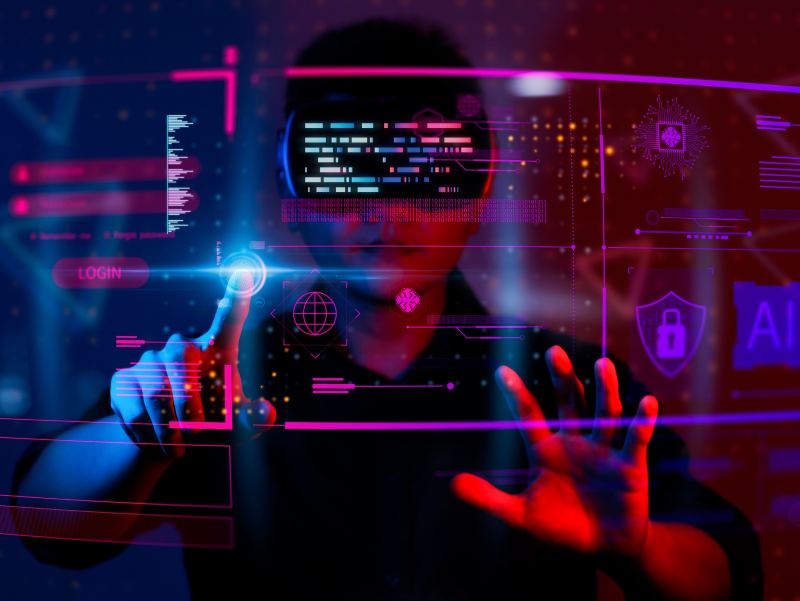
Nuclear experts like Virginia Tech professor Alireza Haghighat have noted the biggest challenge to building new nuclear in the U.S. is workforce training at all levels.
Most nuclear reactors in the U.S. were built decades ago by a workforce that has retired or will do so soon. That generation used paper checklists and traditional blueprints, tended to stay with one employer for years and often worked locally.
Today’s generation of technicians, subject matter experts and engineers grew up with computers and video games. They have different skills and expectations and are comfortable with the digital path to data, since they learned so much of it outside of the classroom.
To meet the workforce challenges of today, a small group of engineers at the U.S. Department of Energy’s (DOE) Argonne National Laboratory has been testing extended reality tools aimed at training the next generation of nuclear professionals.
Argonne’s Mechanisms Test Loop Facility (METL) is the nation’s largest liquid metal test facility where small- and medium-sized components are tested for use in advanced, sodium-cooled nuclear reactors. However, it also can help train people and collect operational data.
Engineers at METL began experimenting with assisted, augmented, virtual and mixed reality, using hardware and software familiar to many video gamers.
“As everything transitions to digital, there is an opportunity for the nuclear industry to use extended reality to break down the silos where useful data resides and bring data to the people who need it,” said Drew Kultgen, Operations Manager of METL.
Using headsets, high-fidelity visualization software, tablets with light detection and ranging (LiDAR) technology, and hard hats equipped with advanced optics, short-range wireless technology and voice-activated software, Kultgen and his team created a digital version of METL.
The result was a digital twin of the 220+ heater zones used to keep METL’s sodium molten.
In one example, engineers overlayed images of an 800-gallon sodium tank with accompanying valves and pipes clearly labeled. The tank appeared true to size, oriented correctly and fitted properly within the actual space.
In its virtual form, a technician could see it covered in insulation and casings or as a rendering with obscuring layers removed. Each part was linked to a unique QR code containing its product serial number. If a novice technician was sent to METL to find and repair a single valve or pipe on that tank, that person could find it quickly and repair it with fewer mistakes.
With hard hats equipped with voice-activated software, workers can access information from multiple sources or complete computer-based tasks hands-free. Kultgen said tradesmen would have found this and other features helpful as they constructed or maintained the facility.
“Imagine standing in front of a pump and being able to see its graph of flow rates and temperatures on a digital screen built into your hard hat,” he said. “Say, ‘Asset Information,’ and the screen shows you the pump’s serial number, manufacturer and vendor with its tech support’s email address and information about ordering lead time.”
Workers can take a screenshot or stream live video of failing equipment, sending it to colleagues in another city. It’s the idea of bringing the “power of a laptop onto the facility floor — minus the laptop.”
“We are often working in tight spaces where even a tablet can seem cumbersome,” said Kultgen. “The technology is so good now that a lot of information can be communicated between headsets and an ordinary smart phone. Being able to work hands-free with unobstructed vision and maximum reliable data starts to present more practical applications.”
Argonne engineers said more trial runs at places like METL can expand the technology’s use beyond gaming and into advanced manufacturing and facility operations and maintenance.
This group recently released a report on the effort, titled “Deploying Extended Reality (XR) for Digital Operations and Maintenance at the Mechanisms Engineering Test Loop (METL).”
“Infrared cameras could be useful,” said Alex Grannan, a nuclear engineer who co-authored the report, on what other ideas could be tested at the facility. “Smoothly combining artificial intelligence and machine learning techniques to allow for natural language processing to understand commands and object detection, and identifying components and accessing schematics would also be cool.”
Kultgen said the adoption of extended reality tools could help bridge the nuclear industry’s historical and future success.
“We have to ask not only how we can get a reactor built on budget and on deadline, but we need to attract and retain a knowledgeable workforce capable of operating and maintaining it,” said Kultgen. “These huge investments take time, so how do we keep trained, skilled people engaged in and committed to the nuclear industry?”
Westinghouse, Tecnatom and Accelerant to create nuclear training program
Westinghouse Electric Company, Tecnatom (A Westinghouse affiliate) and Accelerant Solutions just announced an agreement to launch a nuclear training program for utilities in the United States and Canada.
The Nuclear Excellence Academy, or NEXA, will leverage the companies’ knowledge of industry standards and digital technology to provide in-person, digital and on-demand training for nuclear personnel.
“NEXA offers a solution to utilities seeking to retain and hire nuclear professionals who have the highest qualifications. The training will be standardized to fit the needs of all utilities,” said Francisco Sanchez, Vice President of Safety, Operation and Training at Tecnatom.
Westinghouse reactors make up nearly one-half of the world’s operating nuclear plants. Tecnatom, an engineering company, is 45% owned by Westinghouse.
Accelerant provides consulting and training services to ensure safe, reliable and compliant nuclear operations.